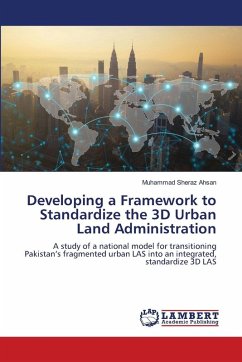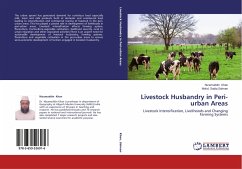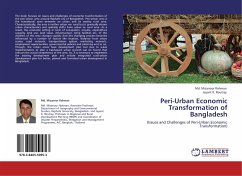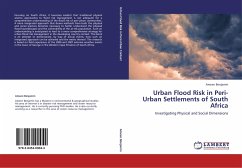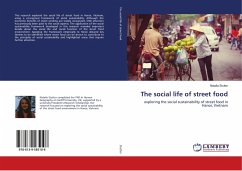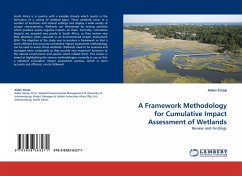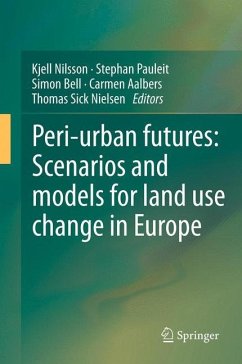
Land assessment framework for peri-urban agriculture
An integrated approach of geospatial and analytic hierarchy process techniques: Case study of Hanoi Province, Vietnam
Versandkostenfrei!
Versandfertig in 6-10 Tagen
39,99 €
inkl. MwSt.

PAYBACK Punkte
20 °P sammeln!
In order to gain higher productivity and profitability, the competition between demand and supply of land for different activities plays crucial role in land use morphology that challenges urban and peri-urban land use planners and managers. The transformation of conventional agricultural areas to modern cash crops and urban areas is a current trend in peri-urban Hanoi. The land assessment framework for sustainable peri-urban agriculture was a result of the combined techniques of Remote Sensing (RS), Geographic Information System (GIS), and Analytical Hierarchical Process (AHP) integrated with...
In order to gain higher productivity and
profitability, the competition between demand and
supply of land for different activities plays
crucial role in land use morphology that challenges
urban and peri-urban land use planners and managers.
The transformation of conventional agricultural
areas to modern cash crops and urban areas is a
current trend in peri-urban Hanoi. The land
assessment framework for sustainable peri-urban
agriculture was a result of the combined techniques
of Remote Sensing (RS), Geographic Information
System (GIS), and Analytical Hierarchical Process
(AHP) integrated with local knowledge. The whole
framework identifies the urban sprawl dynamics and
directions over the last decade, the land use
patterns, and the linkages between peri-urban and
urban areas, and it prepares a spatial decision
scenario for the peri-urban agriculture at different
levels of suitability. This empirical framework
provides a cost effective, rapid land evaluation
framework which can be easily propagated to other
areas and may help policy makers, urban and regional
planners, and researchers working in developing
countries.
profitability, the competition between demand and
supply of land for different activities plays
crucial role in land use morphology that challenges
urban and peri-urban land use planners and managers.
The transformation of conventional agricultural
areas to modern cash crops and urban areas is a
current trend in peri-urban Hanoi. The land
assessment framework for sustainable peri-urban
agriculture was a result of the combined techniques
of Remote Sensing (RS), Geographic Information
System (GIS), and Analytical Hierarchical Process
(AHP) integrated with local knowledge. The whole
framework identifies the urban sprawl dynamics and
directions over the last decade, the land use
patterns, and the linkages between peri-urban and
urban areas, and it prepares a spatial decision
scenario for the peri-urban agriculture at different
levels of suitability. This empirical framework
provides a cost effective, rapid land evaluation
framework which can be easily propagated to other
areas and may help policy makers, urban and regional
planners, and researchers working in developing
countries.



